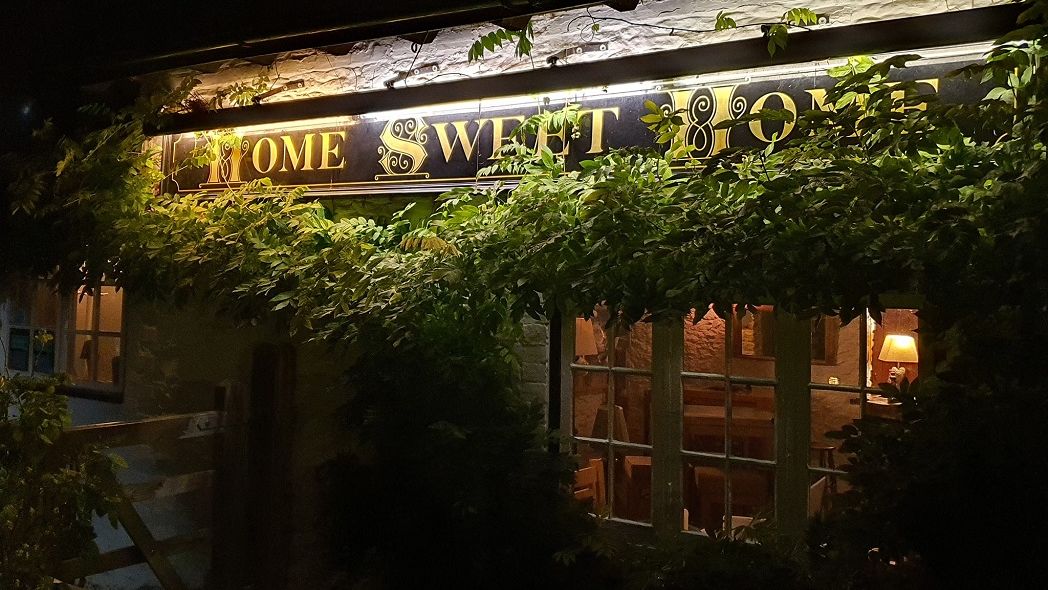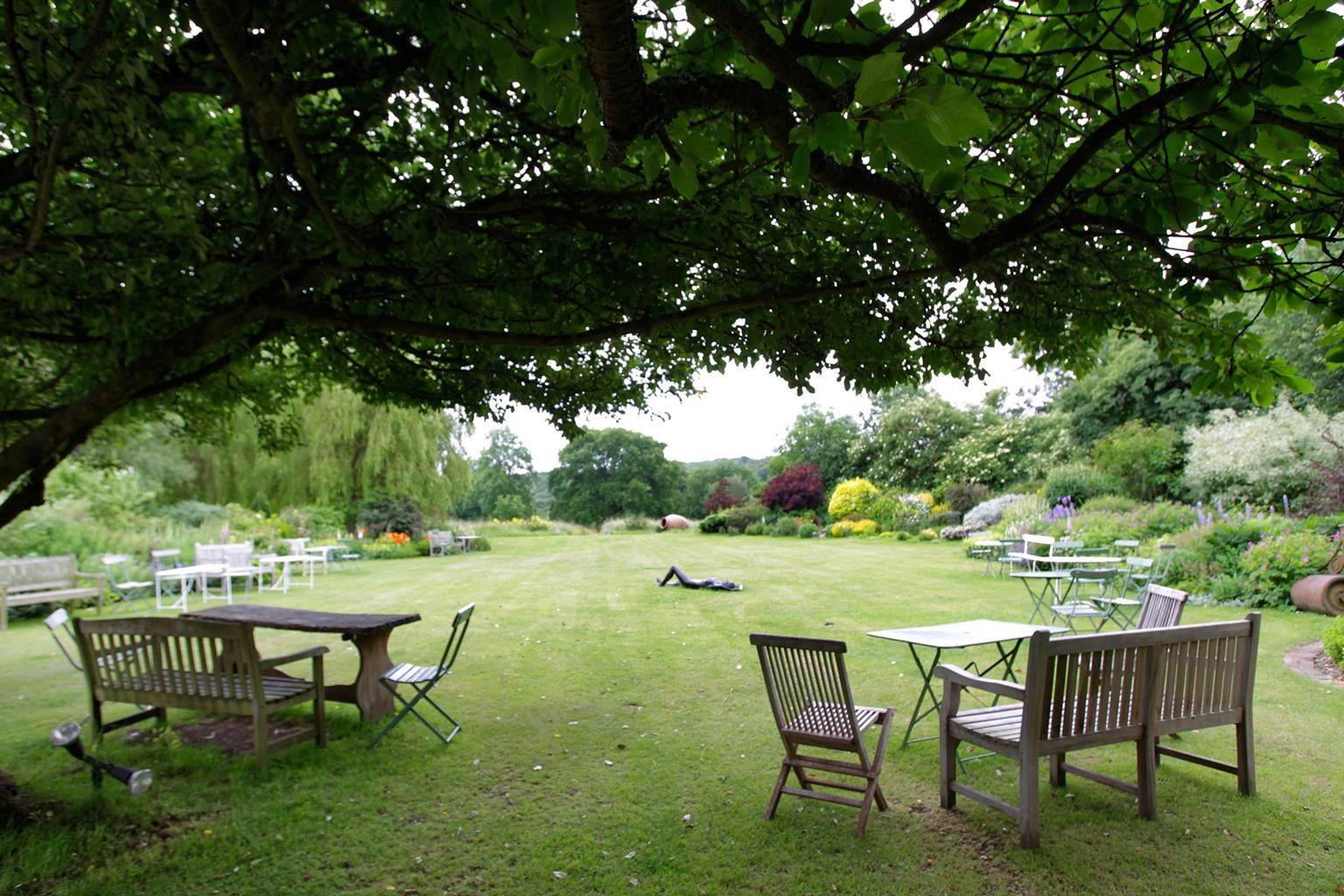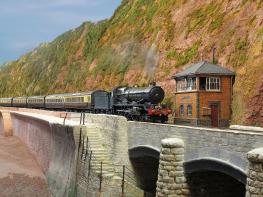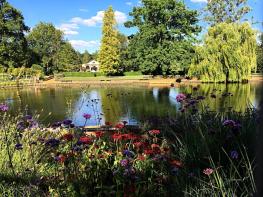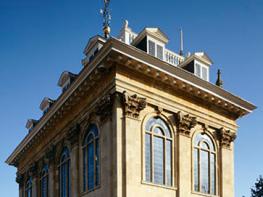Old world charm and modern facilities merge seamlessly in this former coaching inn. Bedrooms in…
Ewelme and the Chiltern Way

4 miles (6.4kms)
About the walk
Ewelme is a remarkable village stretched out along a brook of clear and sparkling water, with some fascinating buildings around the church dating back to medieval times. The red-brick primary school is one of the grandest ancient structures, set close by the almshouses with their charming gardens which cluster below the churchyard. Watercress was harvested here for the markets in London and Birmingham until the end of the 20th century.
As you enter the church, look for the altar tomb which lies in St John’s Chapel between the first and second bays of the chancel. The tomb is that of Thomas Chaucer, who died in 1434, and his wife Matilda Burghersh, who died two years later. Thomas was the son of Geoffrey Chaucer, the poet, and his mother was Philippa Roet, whose sister, Katherine Swynford, was the third wife of John of Gaunt, son of Edward III. The marble slab is decorated with the brasses of Thomas in plate armour, with the unicorn crest at his feet. In each corner is a shield of arms. On the sides of the tomb is one of the largest and most fascinating displays of medieval shields of arms to be found anywhere in the country. The shields and the inscription were restored in 1843 and are thought to date back to the 1430s.
The most imposing tomb in the church is that of Alice, Duchess of Suffolk. Daughter of Thomas and Matilda. Alice inherited the manor of Ewelme from her mother and, after marrying William de la Pole, the Duke of Suffolk, she and her husband planned to transform Ewelme into a model medieval village, using the profits from their Suffolk wool interests. However, the Duke did not live to see the fruits of his labour. In 1450, while on his way to France, the Duke was brutally murdered. His widow took charge of the work at Ewelme, supervising the building of the school and almshouses and the rebuilding of the church. Alice died in 1475. When Queen Victoria became Sovereign of the Order of the Garter, it was uncertain as to where a lady should wear the garter. To try and resolve the matter, it was decided to inspect the tombs of those who wore the Garter. Among them was the effigy of the Duchess of Suffolk. Alice is depicted wearing the Order of the Garter on her left wrist.
Before you leave St John’s Chapel, look up to admire the exquisite carved angel roof, more typical of Suffolk churches.
Walk directions
Go through two kissing gates and take the footpath from the car park which begins parallel to the road towards Swyncombe and Cookley Green. Ease away from the hedge to a kissing gate in trees. Turn left onto the road for 150yds (137m, not less).
Take the second turning right, signed for a bridleway, towards Ewelme Down Farm. Keep to the main track, following it for well over 0.5 miles (800m). Pass the farm outbuildings and continue between trees and hedgerows. Turn left at an intersection at the end of a righthand curve, indicated by a low waymarker on the right beside a chestnut tree, about 0.25 miles (400m) from the farm, and head north, along a left-hand boundary. In the next field continue with the hedge now on your right.
On reaching the road, turn right and when, after a short distance, it bends right, go straight on along the edge of a pretty beechwood. This is the route of the Icknield Way, an ancient highway. Turn left after a few paces and follow the path over open fields and downland. Keep ahead, through a ribbon plantation towards farm outbuildings and a house. Pass to the left of them continuing for 700yds (640m), to where the main track bends right at some double gates.
Go ahead for 0.5 miles (800m) along the lesser way between fences and hedgerow to a road. Turn left, pass the Ewelme village sign and a bridleway on the right, and make for the village centre. Cross Hampden Way and follow the road as it sweeps sharp right, avoiding the turning to the church. Pass Chaucer Court on the right and the site of the old village pound where stray horses and cattle were held. It was probably last in use just before World War II. Pass Ewelme store and tea room, and turn left at the T-junction towards Swyncombe and Crowmarsh, passing a pond on the left. This is Ewelme’s high street, called simply The Street.
Just before the road bends sharp right, turn left into Burrows Hill and begin a moderate but brief climb to Ewelme churchyard and the road. After visiting the church, turn right and pass the Old Rectory. Continue down Parson’s Lane and out of the village. Cross over at the next junction, and back to the car park.
Additional information
Farm tracks, paths and roads (can be busy in Ewelme)
Spectacular downland
On lead in Ewelme, under control near livestock
OS Explorer 171 Chiltern Hills West
Small car park by sports ground at Ewelme
None on route
WALKING IN SAFETY
Read our tips to look after yourself and the environment when following this walk.
Find out more
Also in the area
About the area
Discover Oxfordshire
Located at the heart of England, Oxfordshire enjoys a rich heritage and surprisingly varied scenery. Its landscape encompasses open chalk downland and glorious beechwoods, picturesque rivers and attractive villages set in peaceful farmland. The countryside in the northwest of Oxfordshire seems isolated by comparison, more redolent of the north of England, with its broad views, undulating landscape and dry-stone walls. The sleepy backwaters of Abingdon, Wallingford, Wantage, Watlington and Witney reveal how Oxfordshire’s old towns evolved over the centuries, while Oxford’s imposing streets reflect the beauty and elegance of ‘that sweet city with her dreaming spires.’ Fans of the fictional sleuth Inspector Morse will recognise many Oxford landmarks described in the books and used in the television series.
The county demonstrates how the strong influence of humans has shaped this part of England over the centuries. The Romans built villas in the pretty river valleys that thread their way through Oxfordshire, the Saxons constructed royal palaces here, and the Normans left an impressive legacy of castles and churches. The philanthropic wool merchants made their mark too, and many of their fine buildings serve as a long-lasting testimony to what they did for the good of the local community.
Nearby stays
Restaurants and Pubs
Nearby experiences
Recommended things to do
Why choose Rated Trips?
Your trusted guide to rated places across the UK
The best coverage
Discover more than 15,000 professionally rated places to stay, eat and visit from across the UK and Ireland.
Quality assured
Choose a place to stay safe in the knowledge that it has been expertly assessed by trained assessors.
Plan your next trip
Search by location or the type of place you're visiting to find your next ideal holiday experience.
Travel inspiration
Read our articles, city guides and recommended things to do for inspiration. We're here to help you explore the UK.

